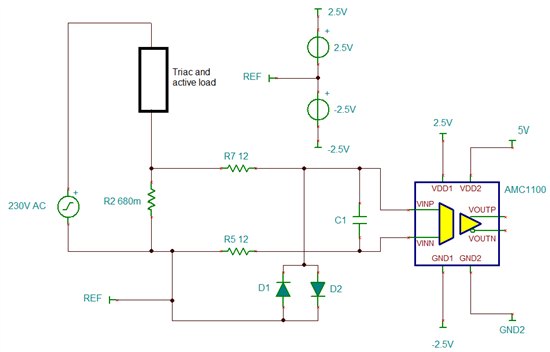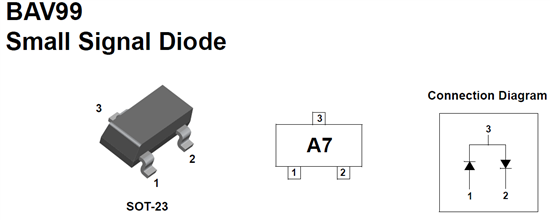Dear Mr Jose Duenas Cuellar!
I thought about circuit in the attached Figure 4 (with TVS or Zener diodes)
Voltage at the R2 resistor may be 10-12 V in overcurrent moment. If to use Zener diodes, then if current flows in I2 direction, then at VD2, VD3 will be voltage 3V and at VINP, VINN will be voltage 3V relatively GND1.
If current flows in I1 direction, voltage applied to VD2, VD3 in the forward direction, then voltage at VD2, VD3 will be 0.7V and VINP, VINN will be 0.7V negative relative GND1. But max negative voltage at VINP, VINN must be no more than 0.5V.
Please, answer
1) Is it essential that this negative value will be 0.7V i.e. more than 0.5V?
2) Can we use R8 in order to decrease input voltage, if max voltage at the R2 is more than 250 mV?
Please,
TIA
Vladimir Naumenkov www.agat.by



